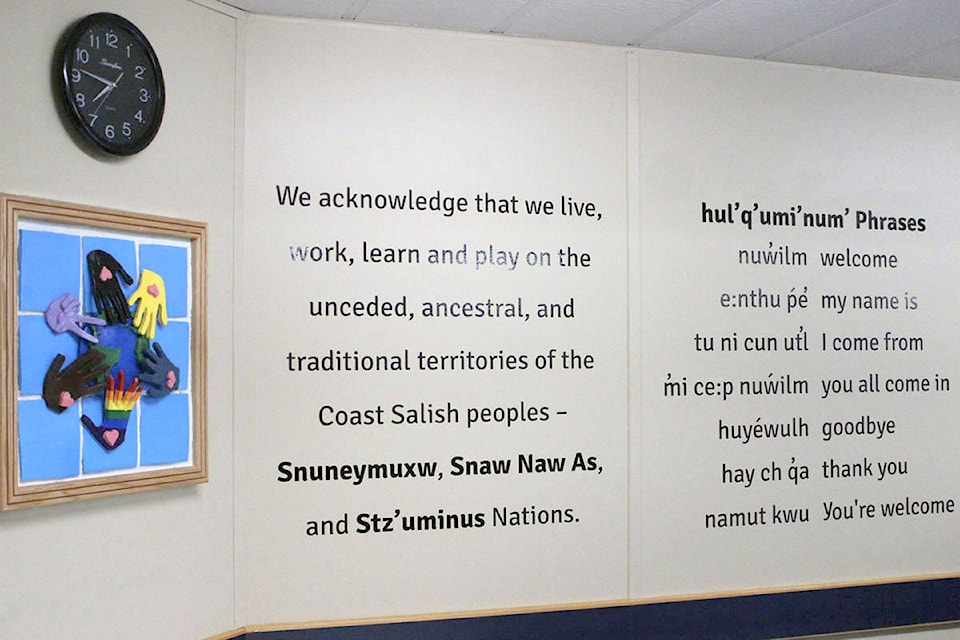To meet new provincial graduation requirements, Nanaimo Ladysmith Public Schools students will need to take an Indigenous-focused course in Grade 10, beginning this fall.
In March, the B.C. Ministry of Education announced that high school students graduating in 2023-24 will need to take one Indigenous-centred course. At the June 1 education committee meeting, Don Balcombe, assistant superintendent, reported to trustees that students can take a ministry-prescribed provincial course, a language course, such as Hul’qumi’num 11, and over time districts will be allowed to offer other locally developed courses to meet the criteria.
The ministry-approved English First Peoples 10 teaches Indigenous creative expression and culture, the assistant superintendent said.
“We said we want all of our students to have an Indigenous-focused course as early in the graduation program as they can, so we said Grade 10s the year…” he said. “If every student in the district in Grade 10 has an Indigenous-focused course, we know that many of them will want to continue … through Grades 11 and 12.”
Charlene McKay, school board chairperson, told the News Bulletin she was appreciative of the new requirement. She said that as part of a recent “student voice session,” students across the district indicated they favoured Indigenous education as a grad requirement.
“I think that there is an appetite in society in general to see more learning about Indigenous peoples of Canada and an Indigenous way of knowing and learning, so the timing is good,” said McKay.
Jeremy Inscho, Nanaimo-Ladysmith teachers’ union president, said the requirement is long overdue and has potential to be expanded.
“There’s also the ability to create locally developed courses and that is something that we’re eagerly looking forward to in the future, like land-based courses that are literally on the land, doing coursework and activities that are appropriate, but those take time to develop,” Inscho said to the News Bulletin. “So the district, this year, is taking the steps to say, ‘we need something now that meets the standard.’ That’s a starting place, and we want to make it clear that it’s a starting place. More can, and should, be done.”
The ministry and a First Nations education steering committee are teaming to implement the requirement. In a press release from earlier this year, Tyrone McNeil, steering committee president, said Indigenous peoples have long sought the change.
”Building awareness and understanding of First Peoples’ perspectives, cultures and histories among all B.C. students will serve as an important step toward reconciliation and an effective strategy to combat racism within the province to the benefit of all British Columbians,” he said.
The ministry released a report on public consultation related to the new requirement on June 17 and said an implementation plan announcement is anticipated for August. In a press release earlier this year, B.C. Minister of Education Jennifer Whiteside said the new requirement is part of the truth and reconciliation process.
“This new requirement will deepen students’ understanding of the experiences, cultures, histories and knowledges of Indigenous peoples,” the minister said. “This will help us to understand the truths of our shared history, while also building knowledge so all students feel a sense of responsibility for our collective future.”
READ ALSO: SD68 Indigenous, overall grad rates highest ever
reporter@nanaimobulletin.com
Like us on Facebook and follow us on Twitter
